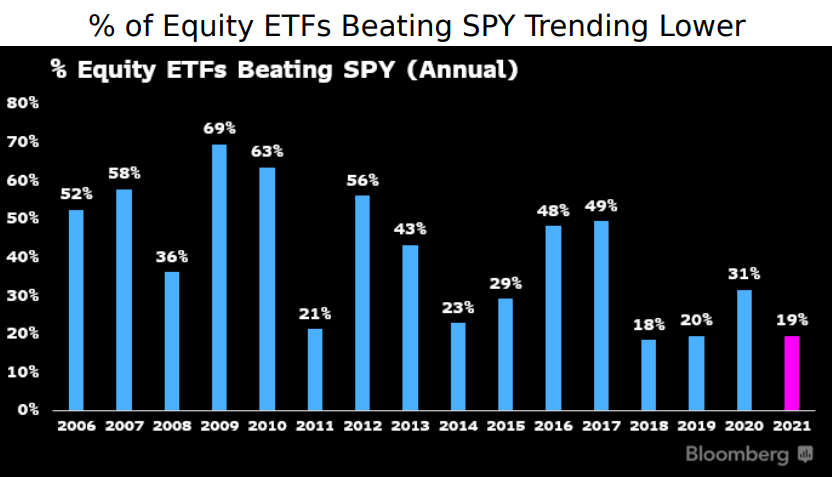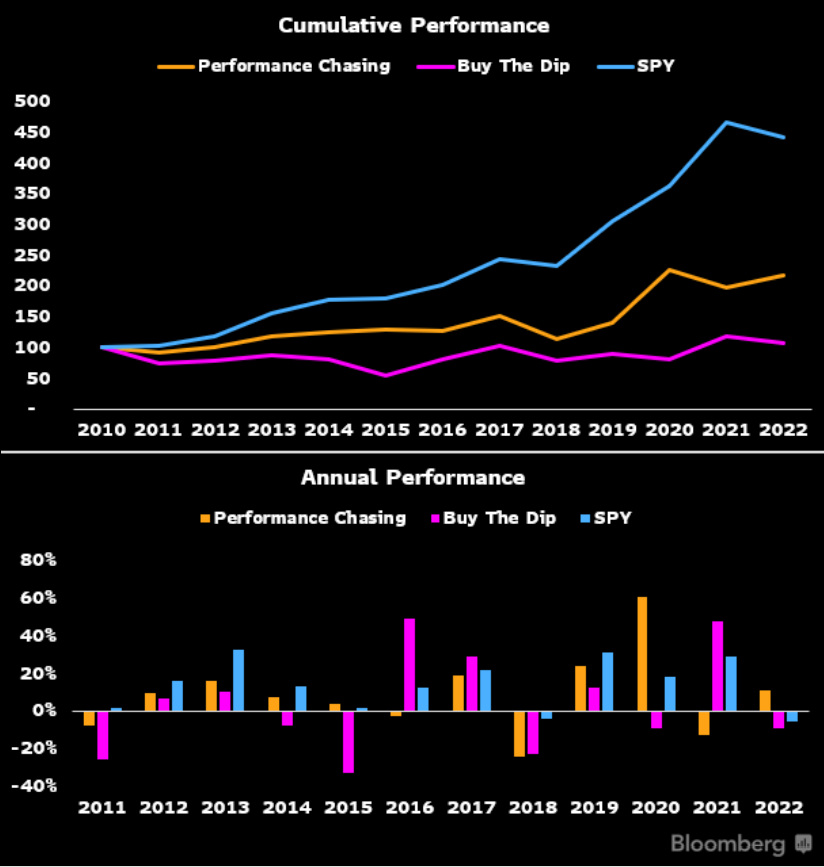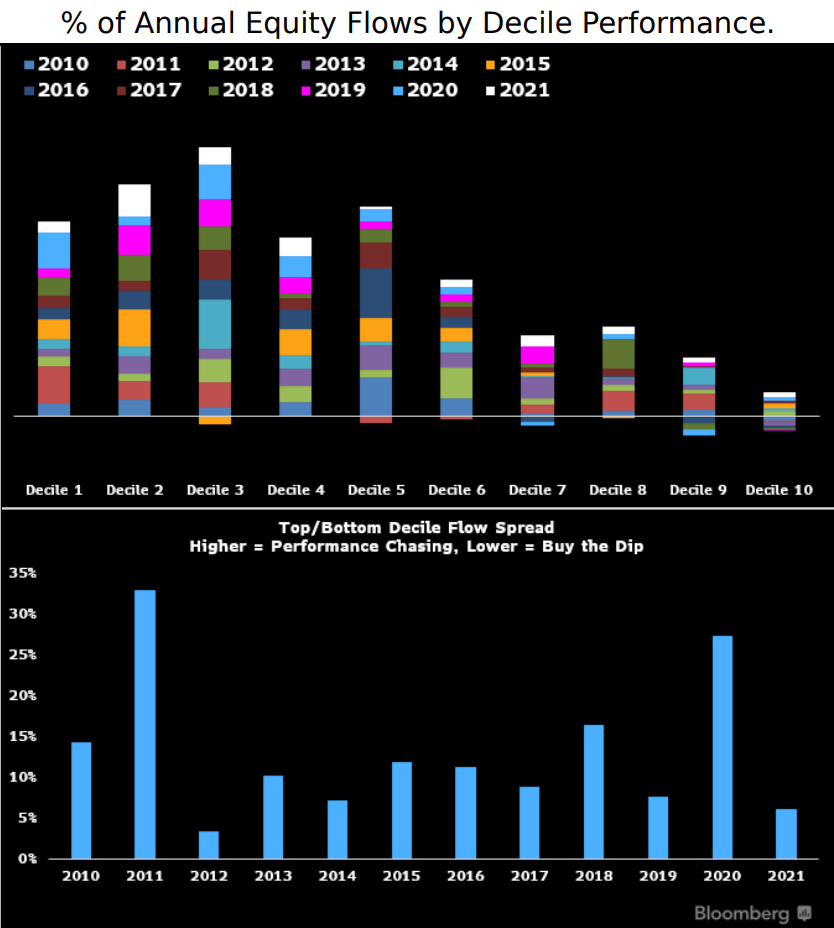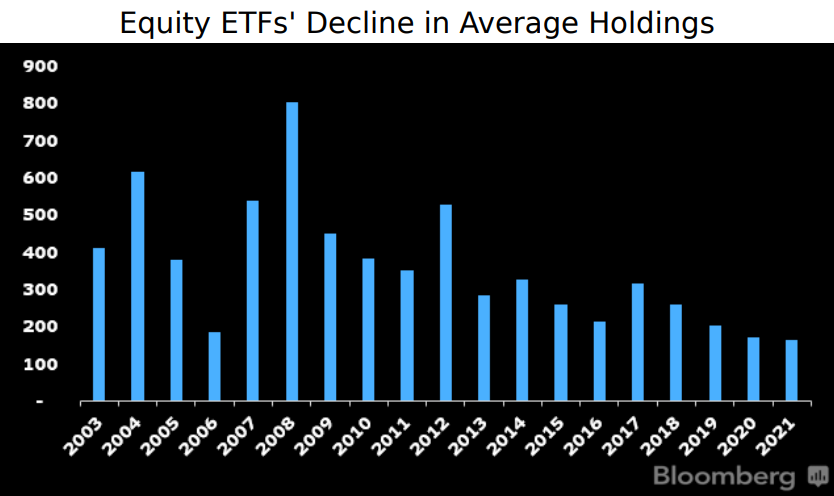Common knowledge among the passive crowd is that few can do better than to buy and hold S&P 500 tracker funds - but can buying market laggards offer long-term outperformance?
Last year, only 19% of equity ETFs were able to beat the popular US benchmark, one of the lowest rates of any year, according to a research note from Bloomberg Intelligence.
While the proportion of outperforming funds falls even further when we include fixed-income ETFs, the S&P 500 has lost out to less than 12% of the equity class over the past three and five years. Furthermore, the SPDR S&P 500 Trust (SPY) has on average ranked in performance decile three of ten since 2010.

Back-testing different ways of trading S&P 500 components, Athanasios Psarofagis, ETF analyst at Bloomberg Intelligence, created two hypothetical portfolios. The first was a performance-chasing methodology, holding each year’s 20 top performers, while a second, dip-buying, methodology bought the 20 worst performers.
Comparing these portfolios against the S&P 500, both enjoyed periods of outperformance, with the performance-chasing strategy up 61% in 2020, versus 18.4% for the S&P 500, and the dip-buying portfolio gained 47% in 2021, still ahead of the S&P 500’s impressive 26.9% returns. However, the vanilla index still outperformed cumulatively since 2010, Psarofagis noted.

In general, equity ETF assets have tended to flow into better-performing products, though the “large role” played by broad index trackers such as the S&P 500 and Russell 1000 can explain a fair portion of this, Psarofagis added.
There were notable exceptions, though. For example, 30% of flows went into ETFs in the top performance decile in 2020, suggesting a performance-chasing tilt. Similarly, in 2021, the bottom two deciles accounted for 9% of flows which Psarofagis said was skewed by supportive policy from the Federal Reserve.

He continued: “The S&P 500's resilience means chasing either winners or losers over time can fall short of a buy-and-hold strategy.
“Though we see signs of ETF inflows migrating toward better performers in the short term, our hypothetical scenarios show that the S&P 500 has been a difficult benchmark to beat over longer periods.”
Psarofagis argued equity ETFs must differ from the S&P 500 in order to beat it. As part of this, new products are becoming increasingly concentrated in their holdings, with the average basket of new equity ETFs containing 167 constituents in 2021, the fewest ever.

Part of this can be attributed to the increase in niche strategies such as thematics but high conviction portfolios will likely become a bigger theme as issuers position their products for chasing outperformance.
Psarofagis concluded: “New ETFs are generally moving away from traditional market-cap-weighted beta, with over 80% of launches in 2021 being either active, smart beta, ESG-based or thematic.”
Related articles




